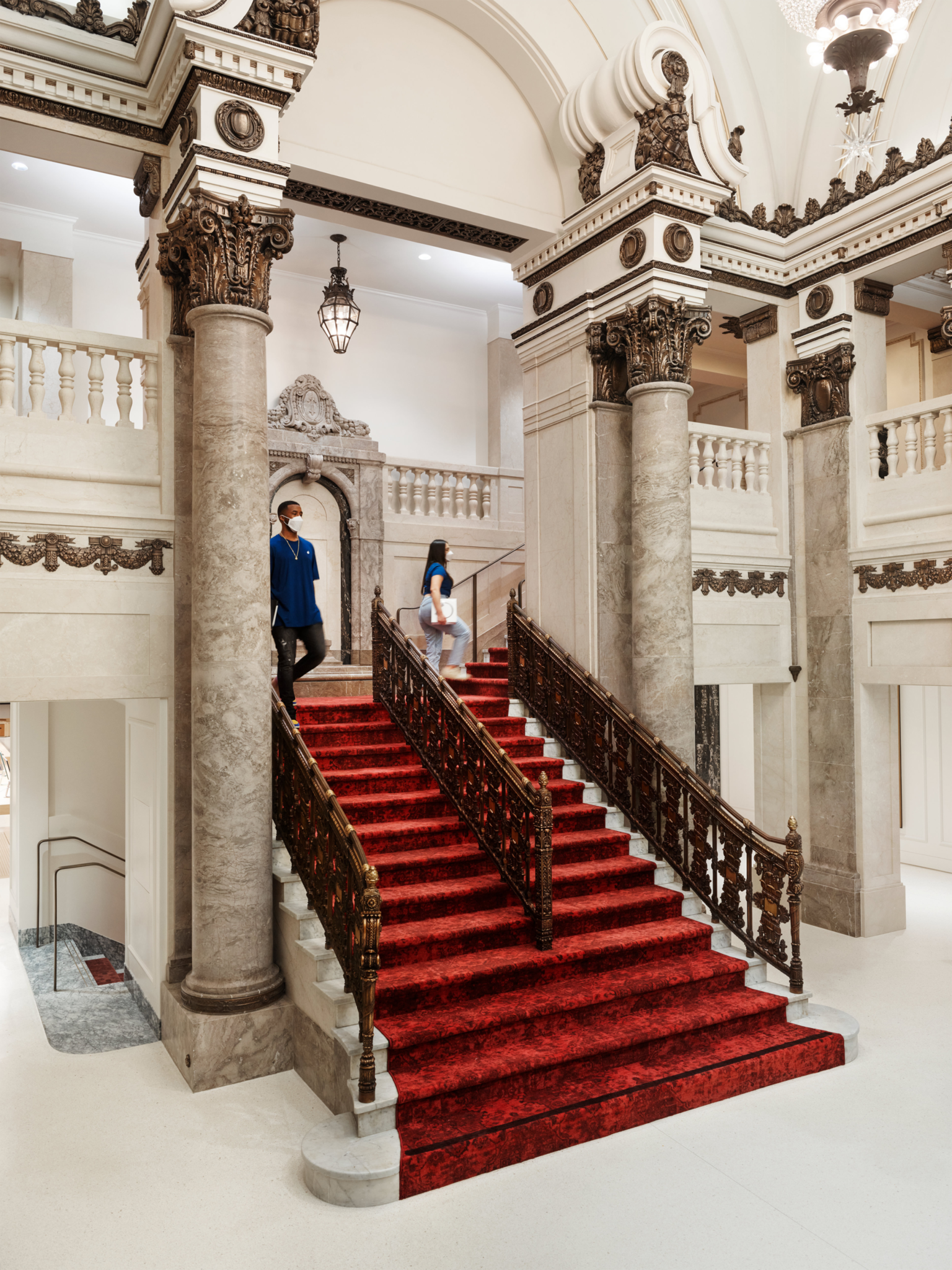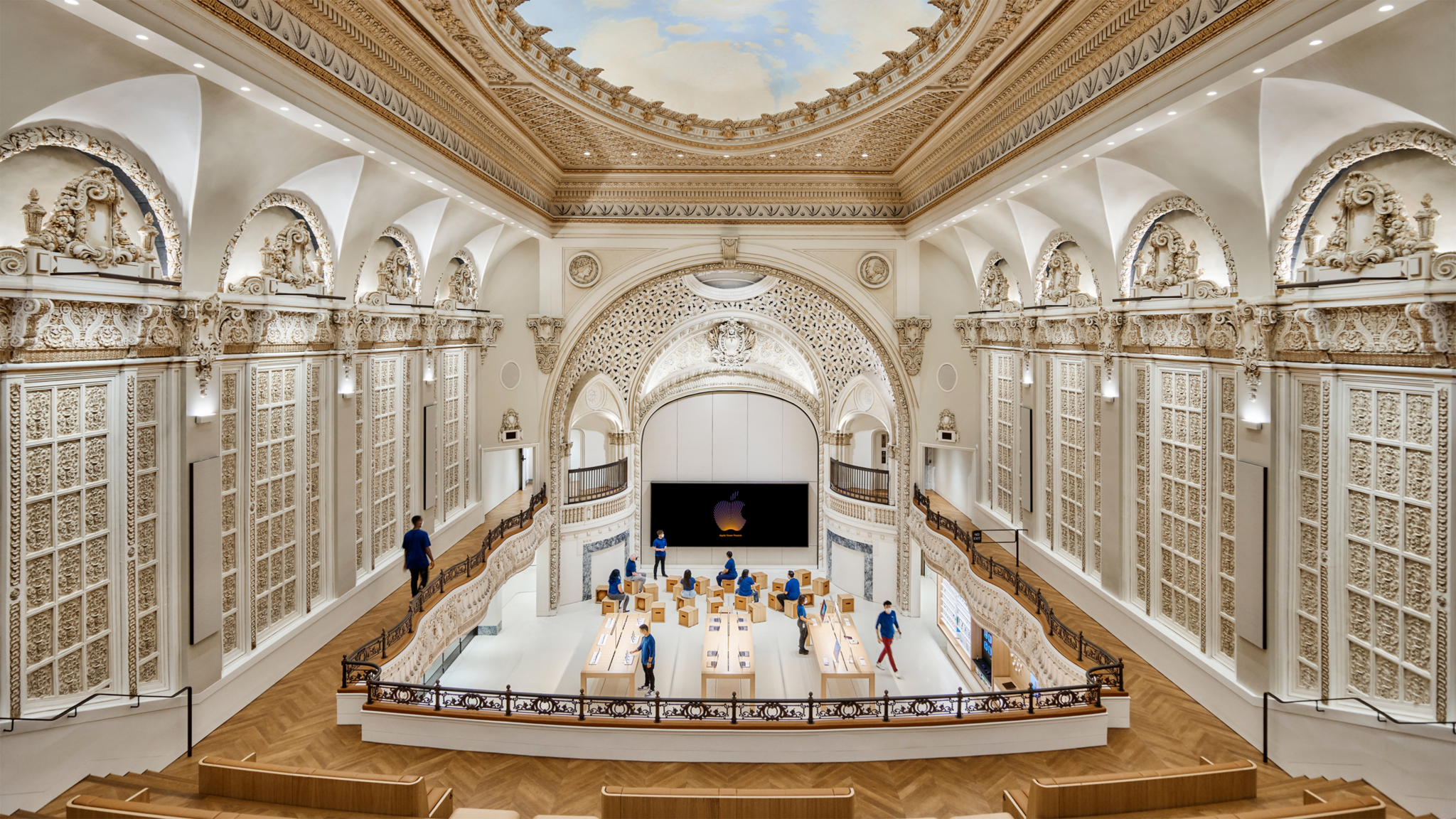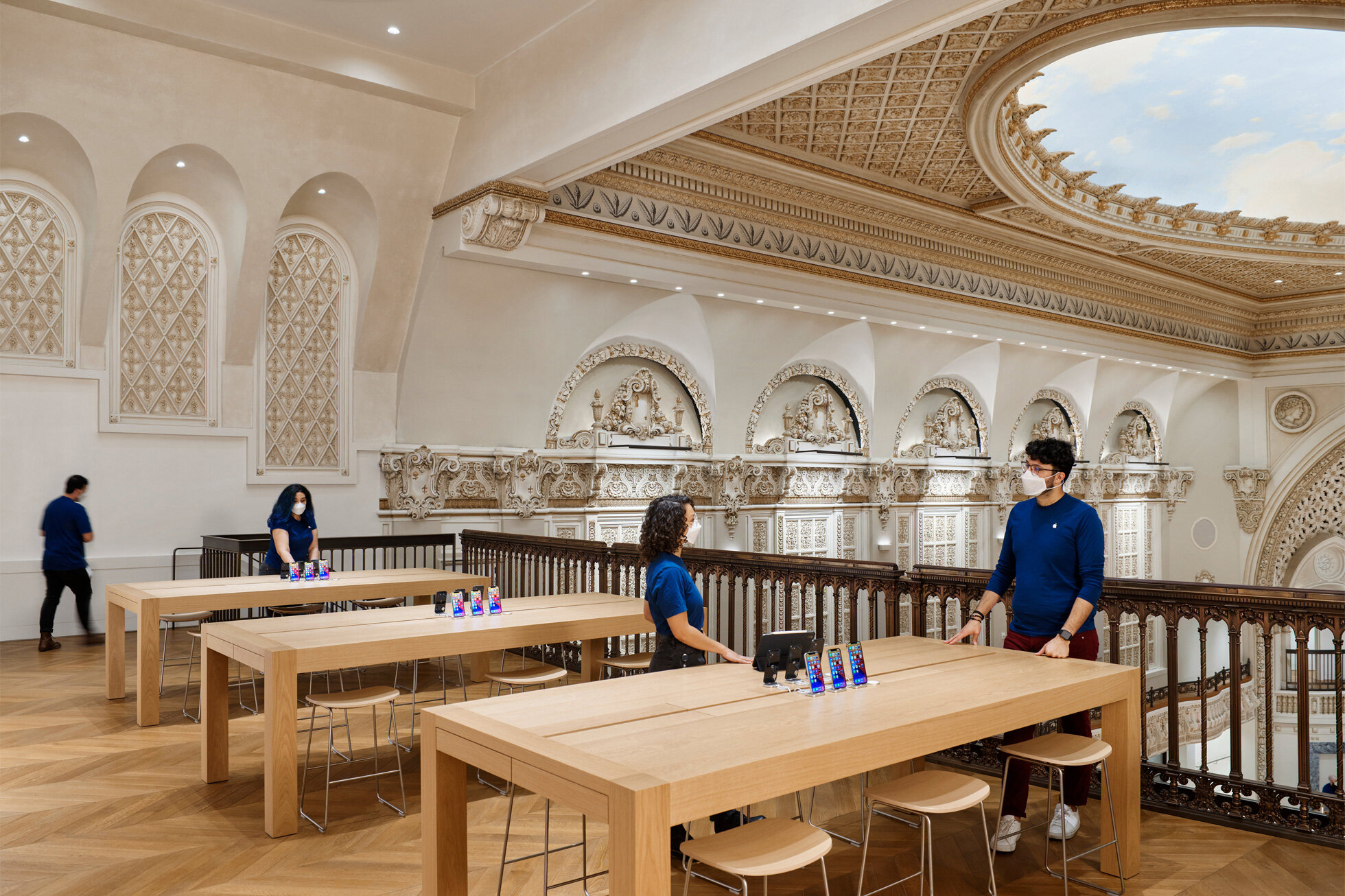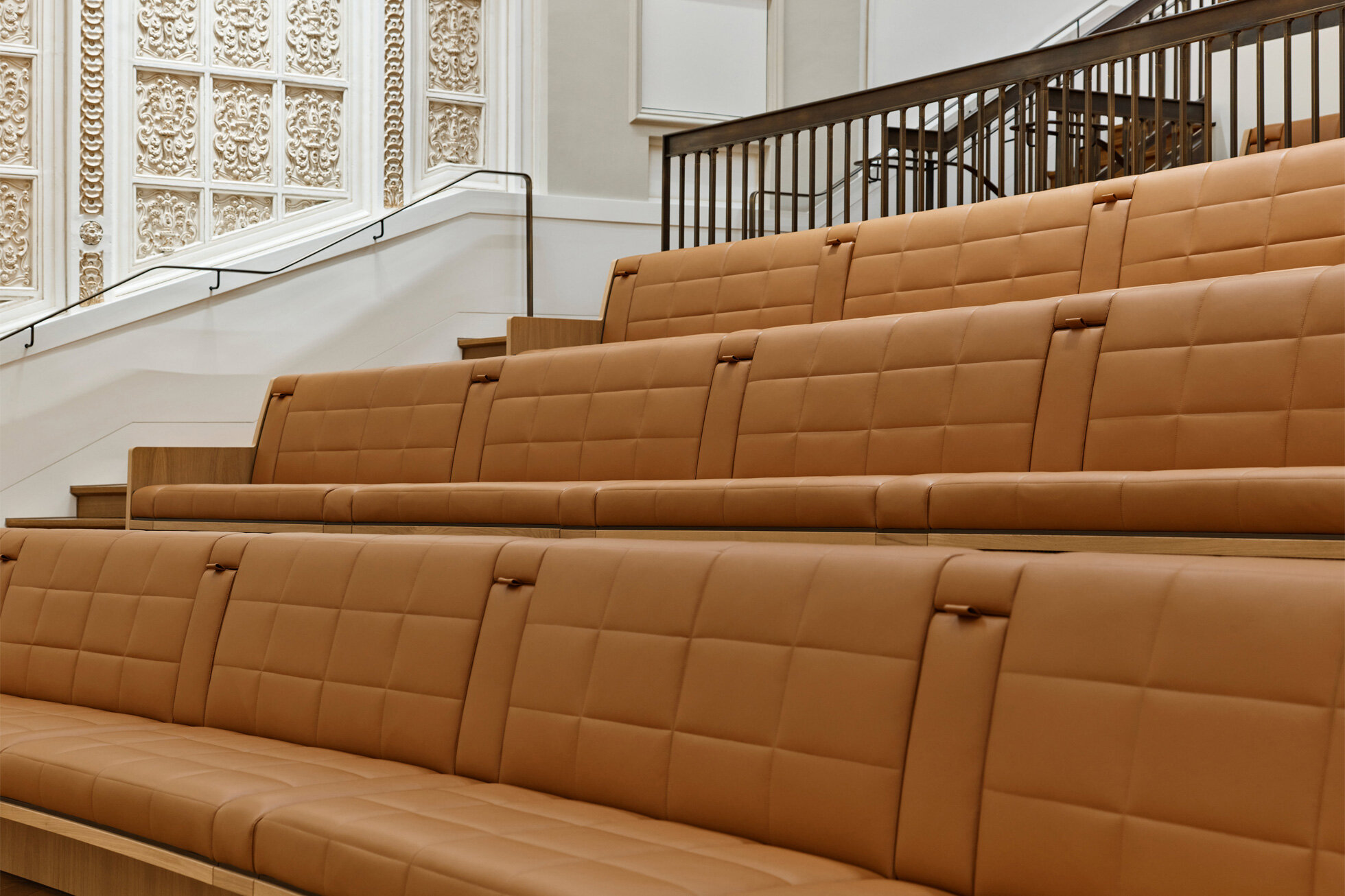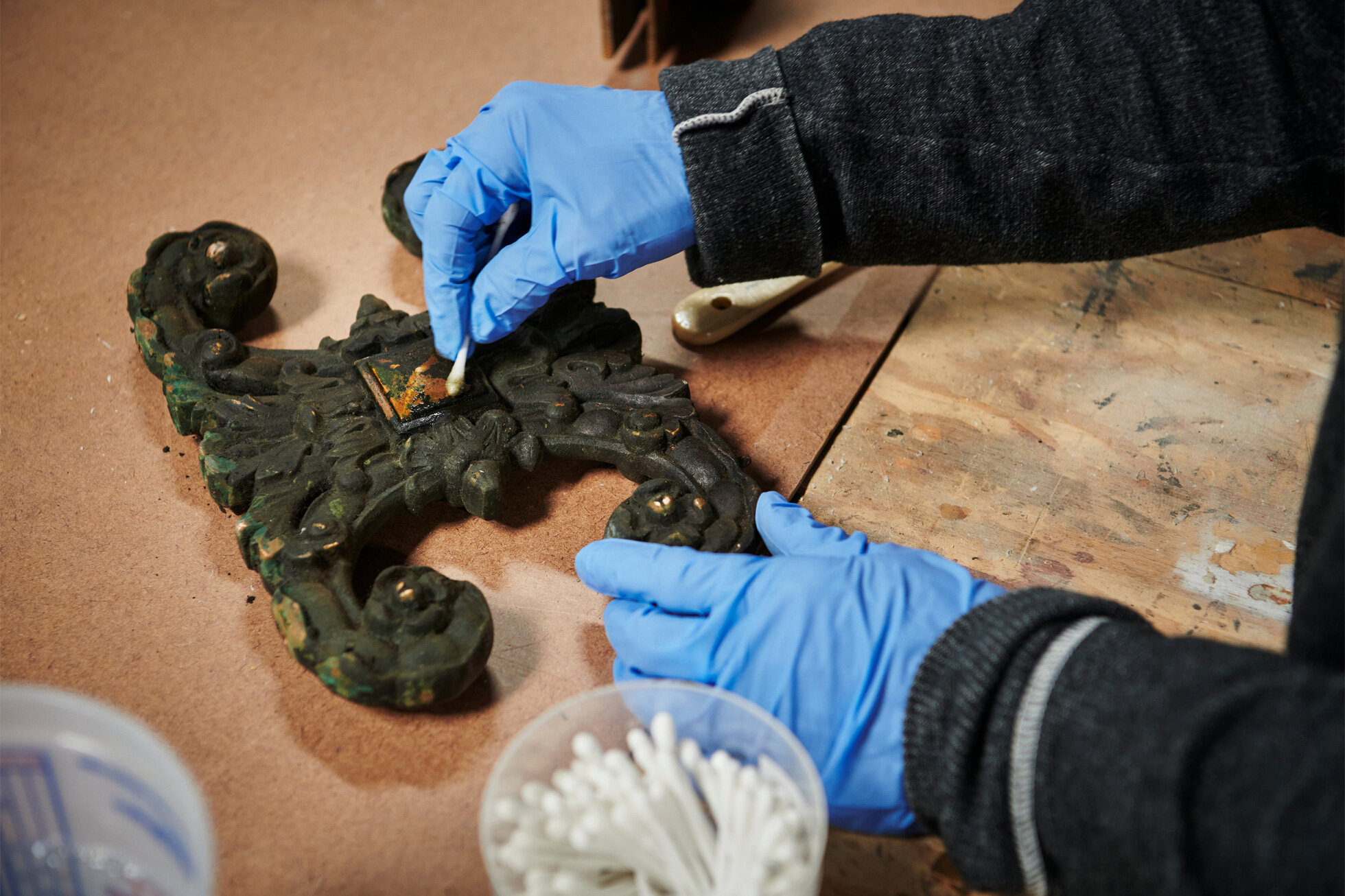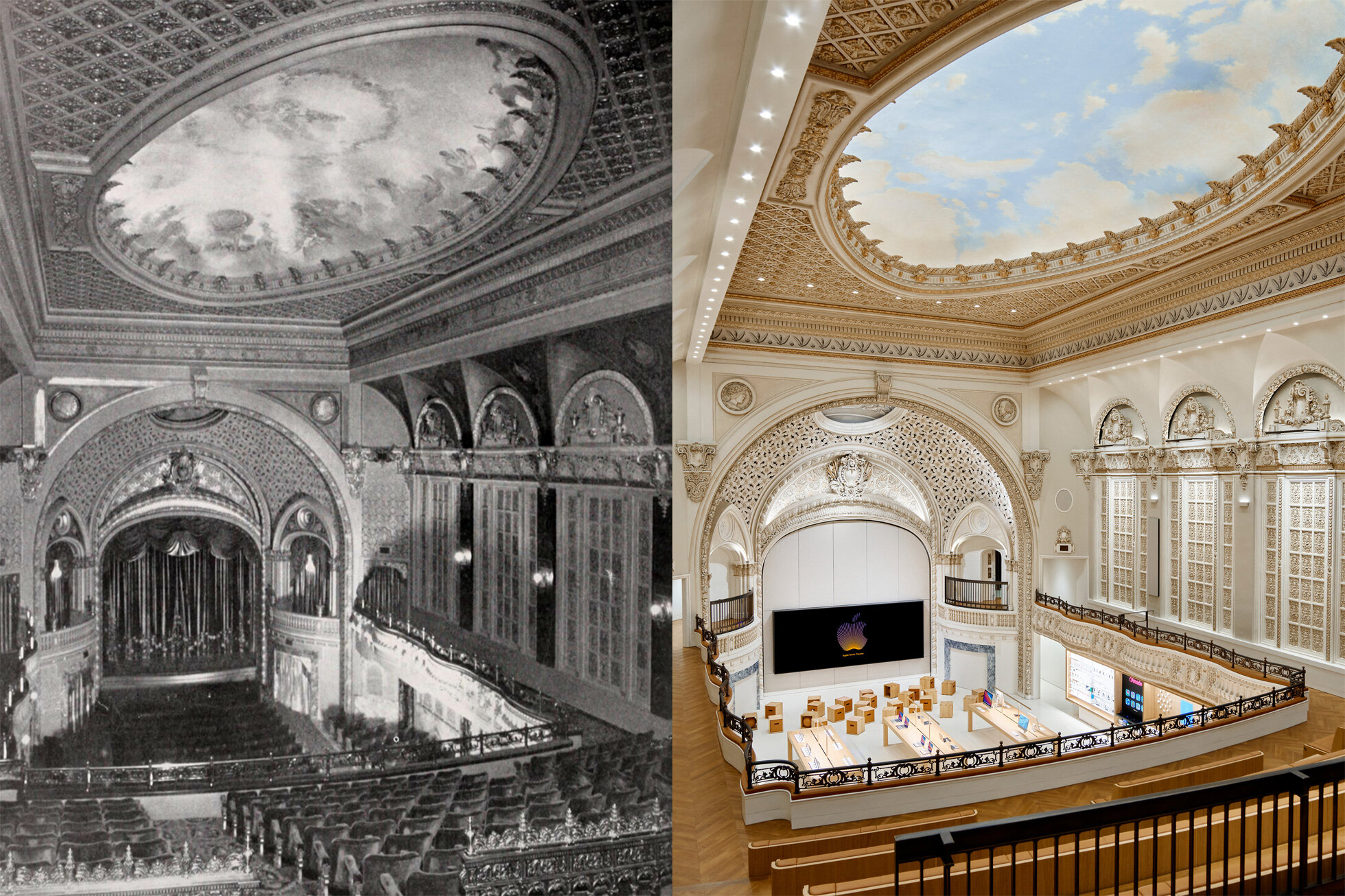Revive and Revue: The Apple Tower Theater
It’s been three years since news broke that Apple would be opening a store in Downtown. Since then an empty and occasionally vandalized Tower Theater - a gem of a movie palace completed in 1927 - remained a bastion-like mystery. It’s backdrop - the chaotic Broadway Theater District - was covered in retail space ads. Several restoration projects had come to a halt, yet block the sidewalks with the grit of construction equipment. For many of us, the closed-off theater’s broken glass clock tower seemed to be the symbol of a revitalization in regression.
The once bustling district of movie premieres and vaudevillian circuits remained a strange cacophony of Bazaar-like discount shops, big-brand sneaker stores, and fenced-off box offices. 24/7 security staff sit on foldable chairs, keeping watch for vandals. By the time of the summer BLM uprisings, when the National Guard had virtually occupied every street corner, the barbed wire fences blocking Tower Theater were vandalized beyond all reason. The juxtaposition of its withered Beaux Art decadence gave an air of an Upton Sinclair novel.
Nevertheless Apple placed a bet that Downtown was the future hub of the creative capital of the world, and seems determined to stick with it. Ashley Middleton, the Global Lead at Today at Apple, said during a sneak preview press event that L.A. was “a city bursting with a ton of creativity,” and that the revitalized Tower Theater would become a major cornerstone for that to endure. She announced the launch of their new creative studios, where professional skills training, hands on sessions and guidance from industry insiders will take place throughout the summer. No specifics were given on the transition from virtual to real sessions, but Tower is expected to be the flagship location of these community-centric endeavors.
Do Ho Lee, Director of Store Design in the Americas, had called the restoration project a “true labor of love,” going as far as utilizing historic photographs and 3D laser scans that “literally peeled back the history.” He said the project required a meticulous level of hand-crafting the various missing features, which included it’s original Beaux Art marquee (removed in the 1930s), and the clock tower’s Pyramid crown (destroyed in the 1971 Sylmar earthquake).
The Tower Theater’s original architect, S. Charles Lee, had designed the building with a mix of Italian Renaissance and Moroccan Revival motifs; he had also drawn much inspiration from the Paris Opera House. Overall, its restored elements are a conspicuous embodiment of Downtown's golden age as the center of the film industry.
But if there’s one thing that truly makes this Apple Store stand out among the hundreds throughout the world, it is undoubtedly it’s current urban context. Whether it's The Americana at Brand, or 3rd Street Promenade in Santa Monica - shopping centers with every spatial element programmed for environmental control - the Broadway Theater District seems nowhere near as tamable. Tower specifically seems to rise as more than just another refurbished retail space; it’s harsh surroundings make it seem like a polished cathedral from a forgotten past (incidentally, the Universal Church of the Kingdom of God is a returning tenant to the State Theater just a block away).
Whatever Tower Theater’s urbane character may be in this ever-dynamic district, it’s renewed elegance feels devoted to Apple as more than a technology company, and Downtown as more than a neighborhood. If it represents anything, it is not only Apple’s ambition to thrive as a global cultural force, but our community’s reemergence as one.
Written by Daniel Nieblas | Photos Courtesy of Apple



